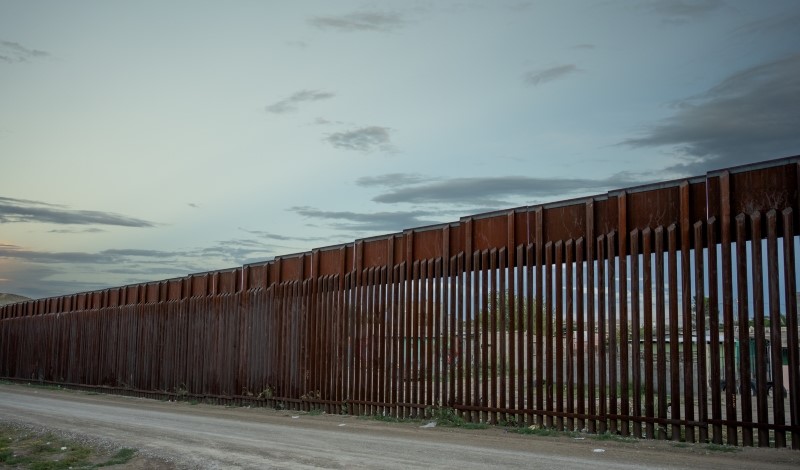
Scholars evaluate the legacy of Title 42 and discuss the future of U.S. asylum policy.
At the height of the COVID-19 pandemic, the Director of the Centers for Disease Control and Prevention (CDC) invoked a little-known provision of the U.S. Public Health Service Act. Colloquially referred to as Title 42, this statutory provision permits the federal government to suspend the entry of goods and foreign nationals in the interest of public health. From 2020 to 2023, the federal government used this provision to impose entry restrictions that allowed it to expel adults and unaccompanied minors seeking asylum at the U.S. southern border.
The Trump Administration implemented Title 42 with the stated intention of mitigating COVID-19 transmission, despite President Trump’s insistence that the virus was not severe and that preventative measures such as lockdowns would do more harm than good. Public health experts condemned Title 42 as ineffective in halting the virus’s transmission. Indeed, these experts criticized the policy as an opportunistic anti-immigration measure spearheaded by certain White House officials.
Immigration experts argued that Title 42 violated international law. Critics of the policy also argued that it perpetuated a racist trope of migrants as disease vectors and facilitated abuses of migrants’ human rights. Experts also noted that Title 42 undermined immigration enforcement priorities, as “repeat crossers” accounted for a quarter of migrant encounters at the southern border. By the time Title 42 ended in May 2023, the Trump and Biden Administrations had expelled more than 2.8 million migrants, of which an unknown number were repeat crossers. The federal government’s lifting of Title 42’s border policies in May coincided with the lifting of the CDC’s emergency declaration.
Title 42 has weathered many federal court challenges over the past three years. Immigrants’ rights groups repeatedly sought to end it in court. Attorneys general in Arizona, Texas, and Florida, among other states, sued to maintain Title 42 after D.C. District Court Judge Emmet G. Sullivan ordered that the policy be vacated last November. The U.S. Supreme Court—which previously halted Judge Sullivan’s ruling and allowed Title 42 to remain in place as recently as late-December—has since declined to hear further legal challenges seeking to preserve the policy, deeming them moot by citing the CDC’s decision to terminate its emergency declaration.
Over the past year, the U.S. Department of Homeland Security (DHS) has been preparing for the end of Title 42 by channeling resources and personnel to the southern border to meet an anticipated increase in unauthorized migrant arrivals. Five days after Title 42’s expiration, the U.S. Department of Justice and DHS issued a final rule introducing a rebuttable presumption of asylum ineligibility for migrants who fail to “avail themselves of lawful, safe, and orderly pathways” before attempting to enter the United States. In response to the Biden Administration’s recent efforts to restrict asylum access, the American Civil Liberties Union and other groups filed suit in a federal court in California in an attempt to block the new policies.
In this week’s Saturday Seminar, scholars assess the impacts of Title 42 on vulnerable migrants and make predictions about the longevity of the Biden Administration’s new asylum restrictions.
- In an article published in Migration Information Source, Muzaffar Chishti and Kathleen Bush-Joseph of Migration Policy Institute note that the anticipated surge of “irregular” migrant arrivals at the southern border has not yet materialized. In advance of the lifting of Title 42’s restrictions, the Biden Administration issued new policies to bolster border enforcement, expedite removals under Title 8, and institute more “orderly” migrant processing procedures at the southern border. But Chishti and Bush-Joseph note that administrative processes have slowed as a result. The U.S. Citizenship and Immigration Services cancelled previously scheduled affirmative asylum proceedings, and immigration court backlogs have worsened in the post-Title 42 era. According to Chishti and Bush-Joseph, these new border policies may continue to impact the immigration landscape in the United States for years to come.
- In the Georgetown Immigration Law Journal, Professor Sarah Sherman-Stokes of Boston University School of Law argues that Title 42 continued an enduring practice of health-based immigration exclusions in the United States. Sherman-Stokes contends that the logic underlying the origins of the quarantine power is both scientifically unfounded and inherently xenophobic. Because over 70 percent of asylum seekers apprehended at the border in 2019 were from El Salvador, Guatemala, and Honduras, Sherman-Stokes focuses primarily on that group, identifying a long history of anti-Central American animus in U.S. immigration policy. In her article, Sherman-Stokes points out that, despite campaign promises to the contrary, President Biden “doubled down” on many of President Trump’s immigration policies.
- In Bender’s Immigration Bulletin, Anil Kalhan, Professor of Law at Drexel Law School, calls attention to the role of President Trump’s federal judicial appointments in hindering the Biden Administration’s early efforts to roll back some of the former president’s controversial immigration policies. Kalhan argues that some of those policies, including Title 42, proved durable in part because Senate Republican leaders and other conservative activists packed the federal judiciary with “committed partisan ideologues.” Kalhan claims that immigration opponents in some federal districts exploited quirks in the case assignment process, which effectively allowed them to choose the judges hearing their cases and entrench their immigration policy preferences. Kalhan asserts that Trump judicial appointees handed wins to litigants favoring anti-immigration policies, often issuing opinions featuring dubious legal reasoning and fact-finding.
- Public health crises should not be manipulated by government officials to advance immigration restrictions, argue Anne G. Beckett, Loune Viaud, Michele Heisler, and Joia Mukherjee in an article in the New England Journal of Medicine. In their article, Beckett and her several coauthors articulate why public health and medical experts have a duty to act when public health policy is misappropriated to harm certain groups. According to the Beckett team, public health and medical experts are well-qualified, and typically well-positioned to condemn policies such as Title 42 as inhumane, unnecessary, and dangerous. The authors note that public health and medical professionals can credibly champion evidence-based measures to balance pandemic-related concerns with immigrants’ rights.
- Title 42 failed to reduce irregular migration into the United States, argues David J. Bier of the Cato Institute. Bier predicts that President Biden’s new plan will recreate the same conditions that caused Title 42 to fail, albeit under different statutory authority, and will leave asylum seekers deported to Mexico with few options but to attempt to cross the border again. Although the Biden Administration has made significant efforts to increase legal migration pathways, Bier insists that continuing to deport unauthorized migrants to Mexico will perpetuate Title 42’s recidivism problem.
- In a recent article in the Journal of Economic Perspectives, Gordon Hanson, Pia Orrenius, and Madeline Zavodny argue that increased border enforcement protocols and asylum application backlogs have obscured the reality of pandemic-era migration flows from Latin America to the United States. Hanson, Orrenius, and Zavodny offer an empirical and historical perspective on the dynamics of immigration from Mexico, the Caribbean, and Central and South America to the United States. Hanson, Orrenius, and Zavodny claim that immigration from these regions is influenced by a combination of factors, including instability in migrants’ home countries, economic opportunities in the United States, and the presence of ethnic enclaves within certain major U.S. cities, which can ease integration.
The Saturday Seminar is a weekly feature that aims to put into written form the kind of content that would be conveyed in a live seminar involving regulatory experts. Each week, The Regulatory Review publishes a brief overview of a selected regulatory topic and then distills recent research and scholarly writing on that topic.



